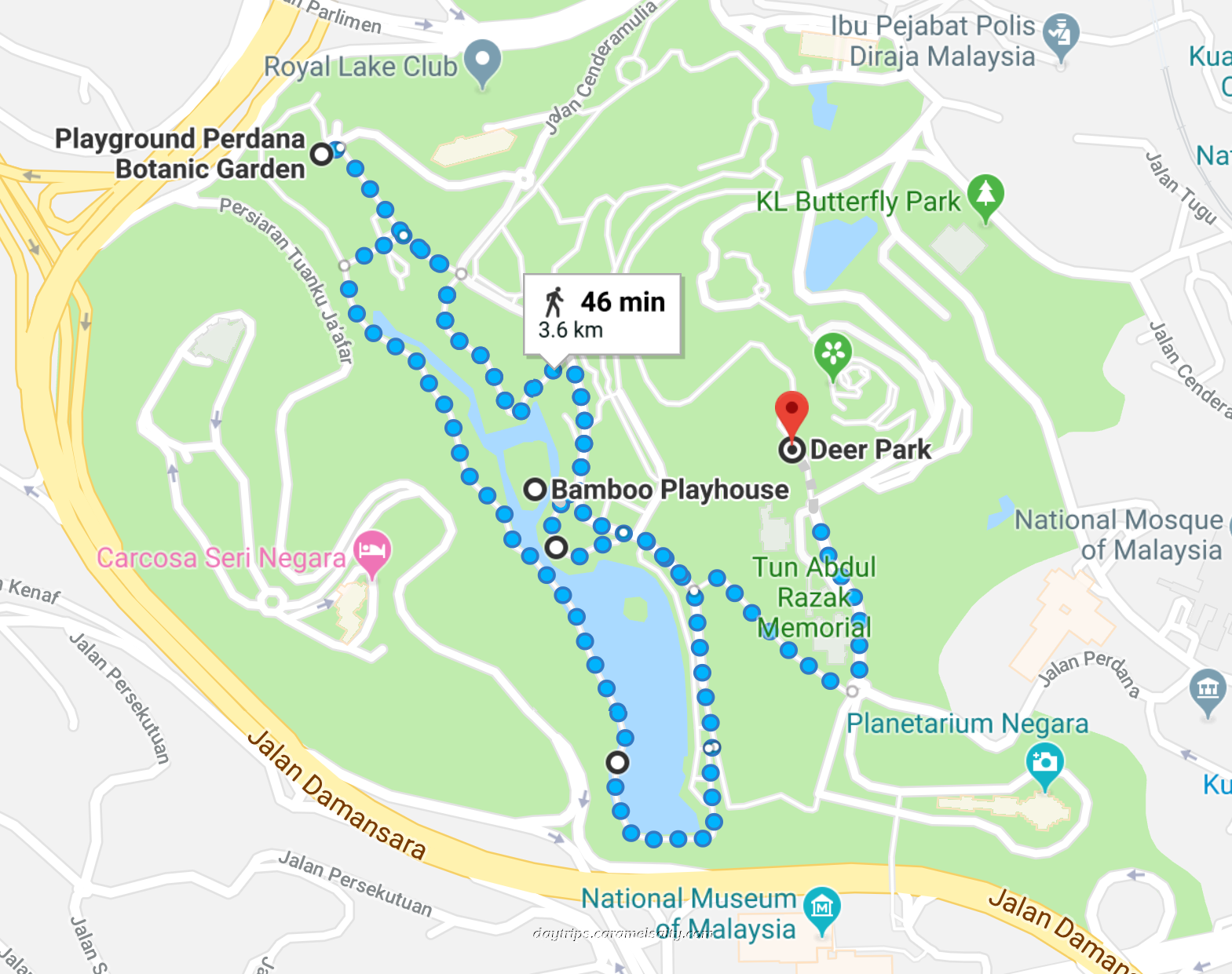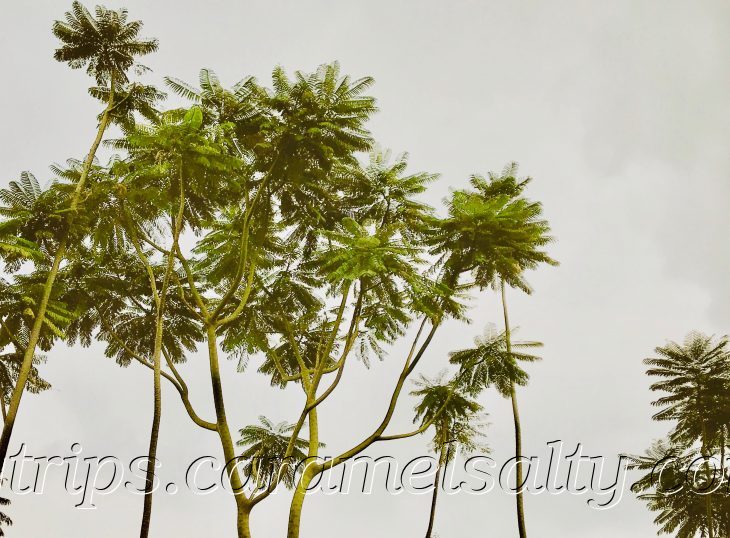
Kuala Lumpur’s Lake Gardens
It all begins with a State Treasurer named Venning and a British Resident named Swettenham. One day, they meet for a drink in tropical Kuala Lumpur. The story then goes that they spend several mornings scrambling about a swampy valley, amongst lallang (tall grass), vines, forest trees, ferns and pandanus (screwpines). Finally, Swettenham says to Venning, “Let’s get on with it, old chap”.
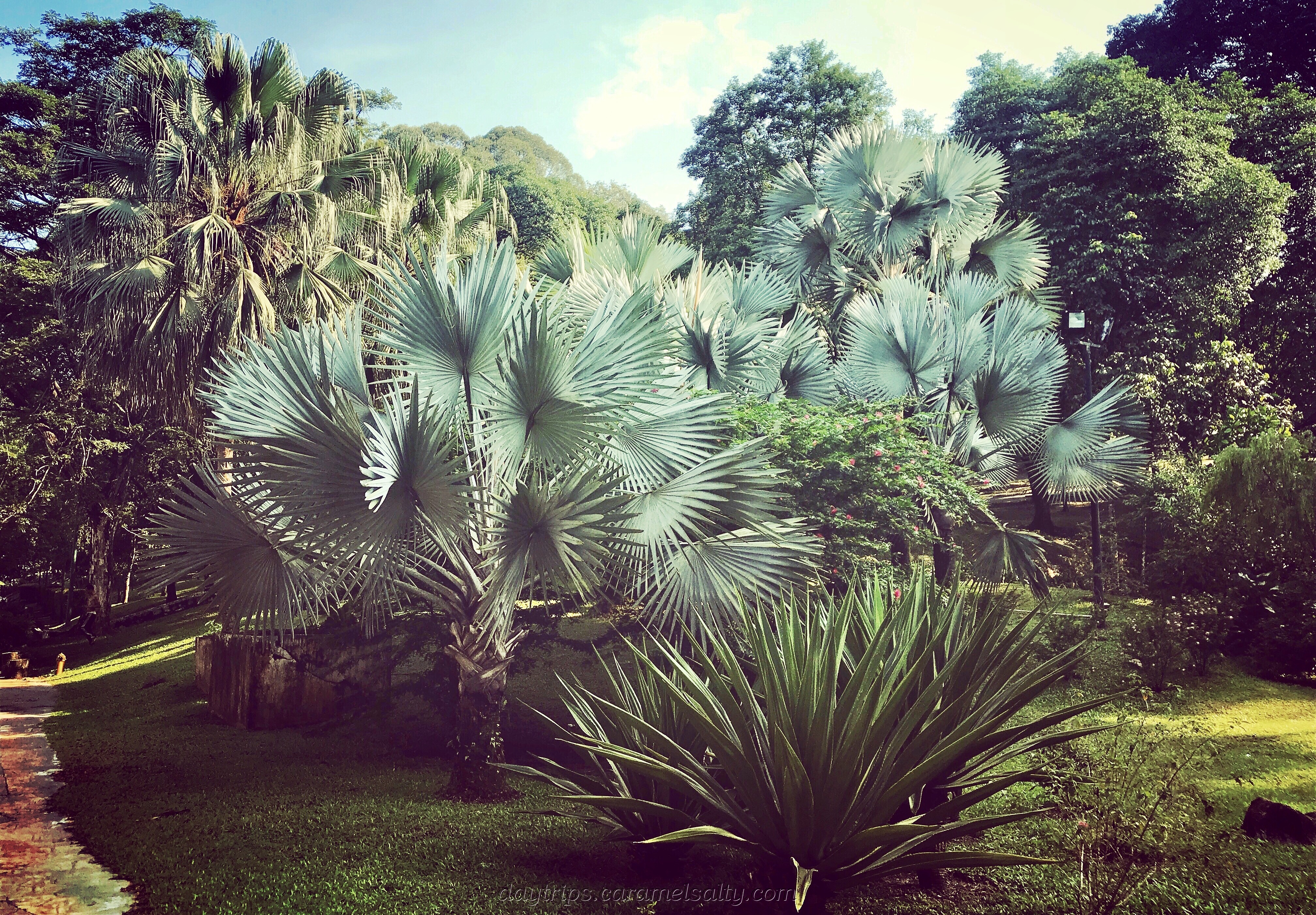
- Start of Day: KL Sentral, Kuala Lumpur
- Cost of Day Out : Cheap
- History Content : Low
And so Venning gets on with it. In the year 1888, the river Bras Bras is dammed up. The lake it forms is called Sydney, named after Swettenham’s wife. 100 cempaka and orange trees are gifted from Chow Ah Yeok, a prominent Cantonese. 10 years pass before the final tree is planted and the final piece of grass is landscaped.
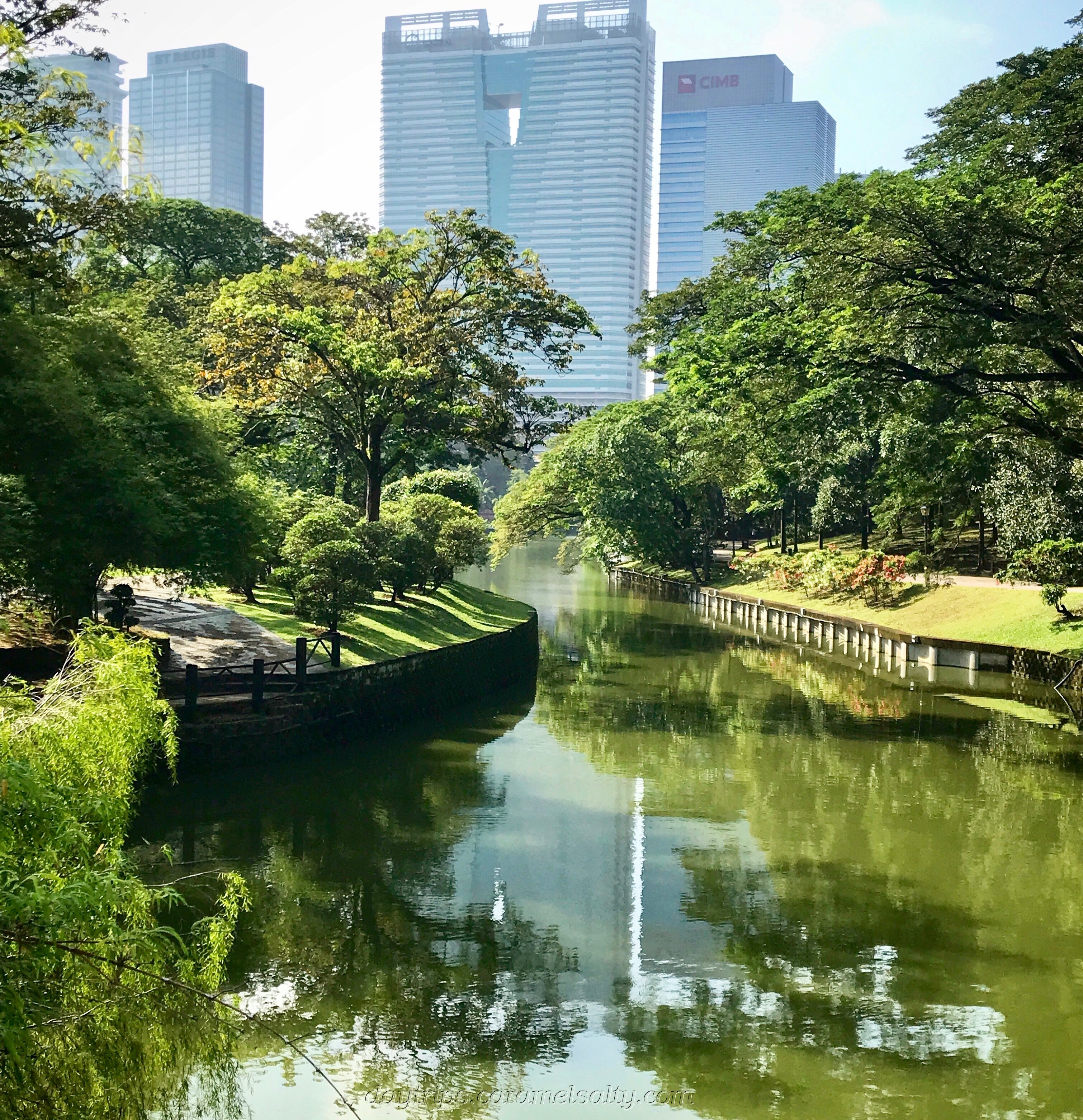
120 years later, I step off a train at KL Sentral, in the very same equatorial Kuala Lumpur that Venning and Swettenham met in. I have 173 acres of landscaped gardens to cover. That’s a lot of walking. And so a hearty Malaysian breakfast of Nasi Lemak is called for at [1] KL Sentral’s hawker stall on the 3rd floor. Followed by a totally traffic free walk to the Lake Gardens via the National Museum MRT station.
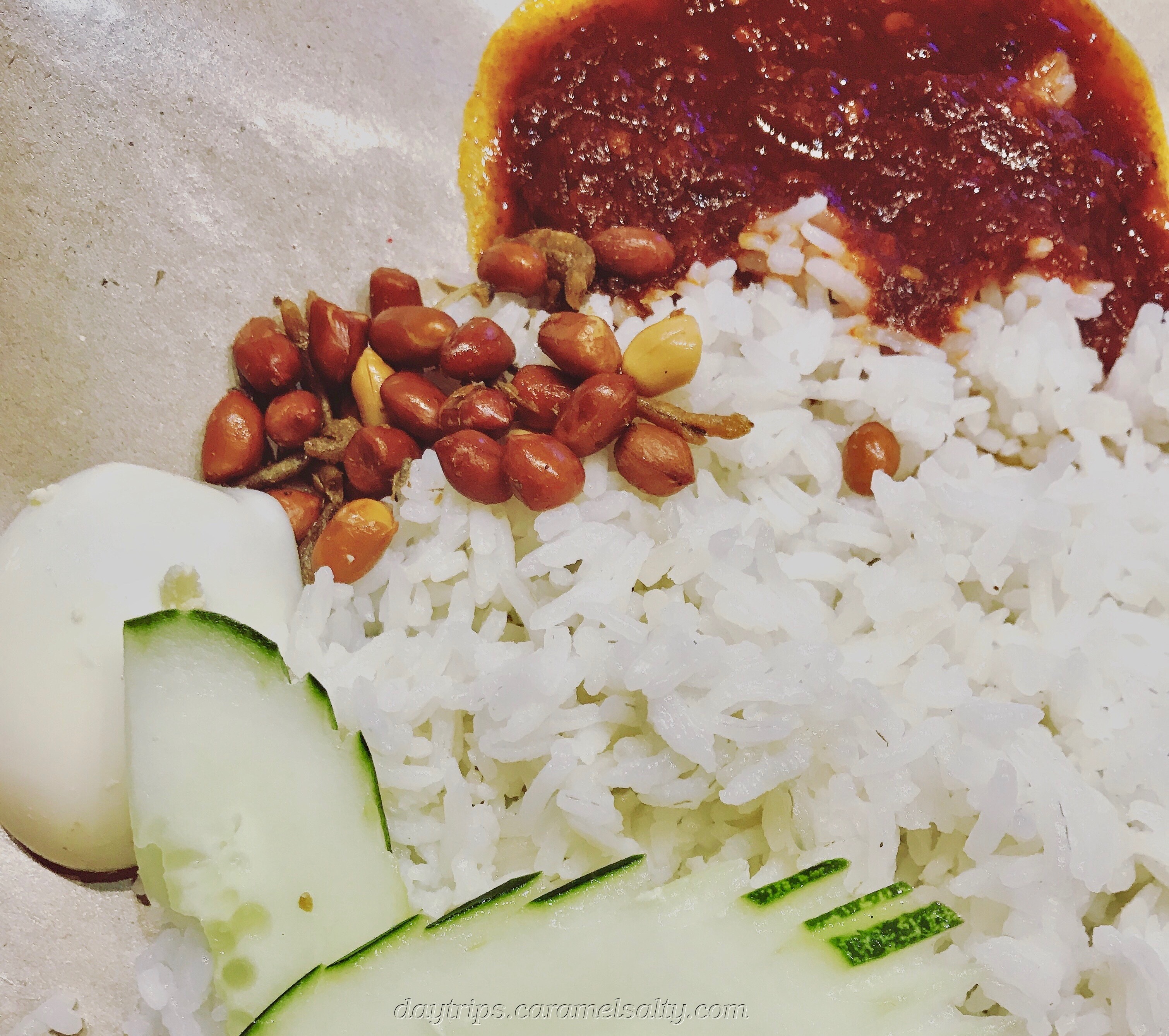
On exiting the MRT Station, I climb the steps to the museum, go around the left side of the building, down the hill and under Damansara Road. And suddenly, I’m by Venning’s brainchild, the lake that is now known as [2] Tasik Perdana. A helpful map by the entrance highlights 60 points of interest scattered around the gardens. I intend to do as many of these as I possibly can today.
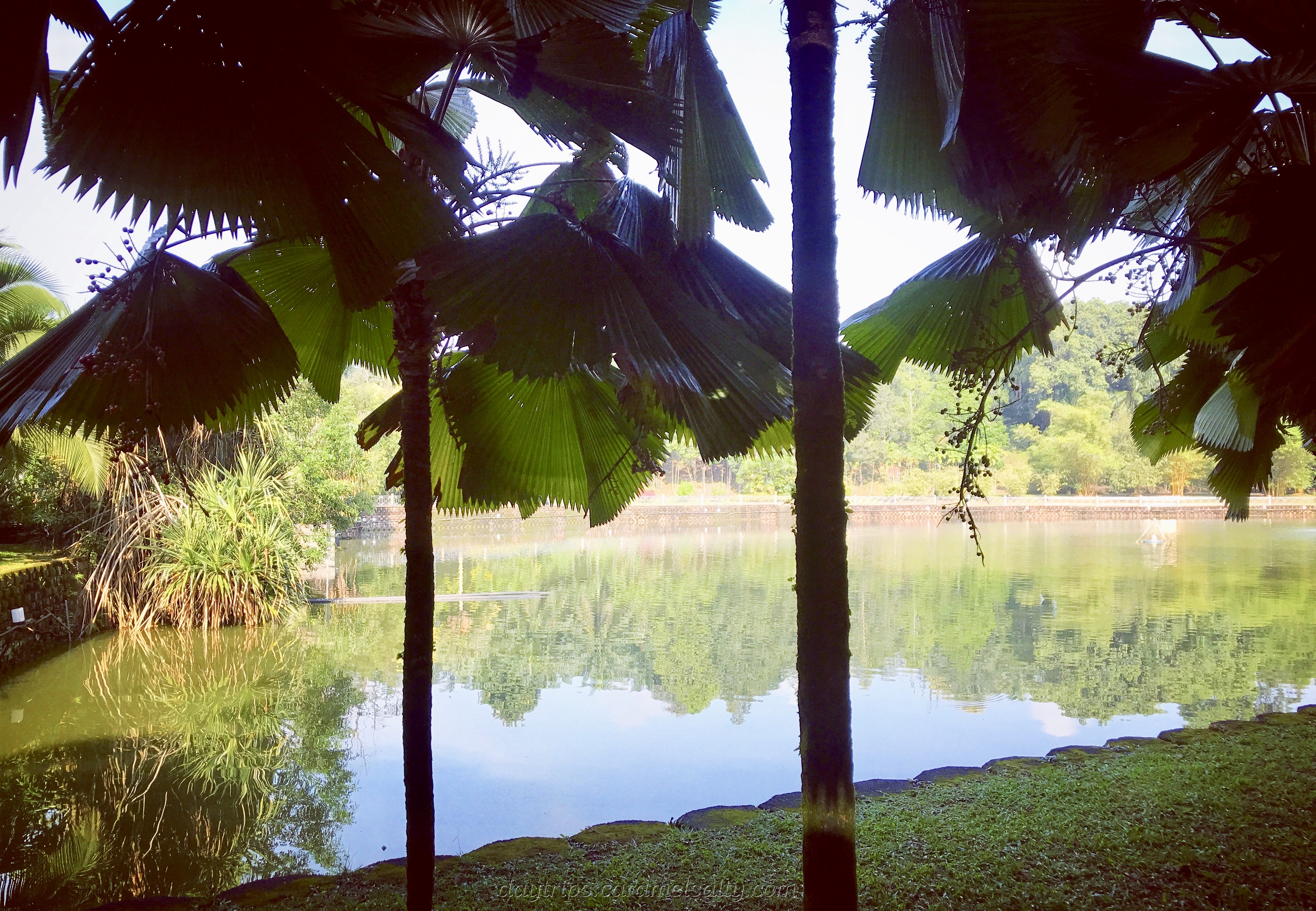
I take the lakeside road on my right and soon arrive at point of interest no.17 – The Wetlands. The spot is marked by an incredible array of large palms. A side path leads me to a pond and a hillside scramble of randomly placed tree logs. I return to the lakeside road to then go past no.16 – The Rare Fruit Tree Collection. Along the way I spot some magnolia champaca trees. Are these the original ones gifted so many years ago?
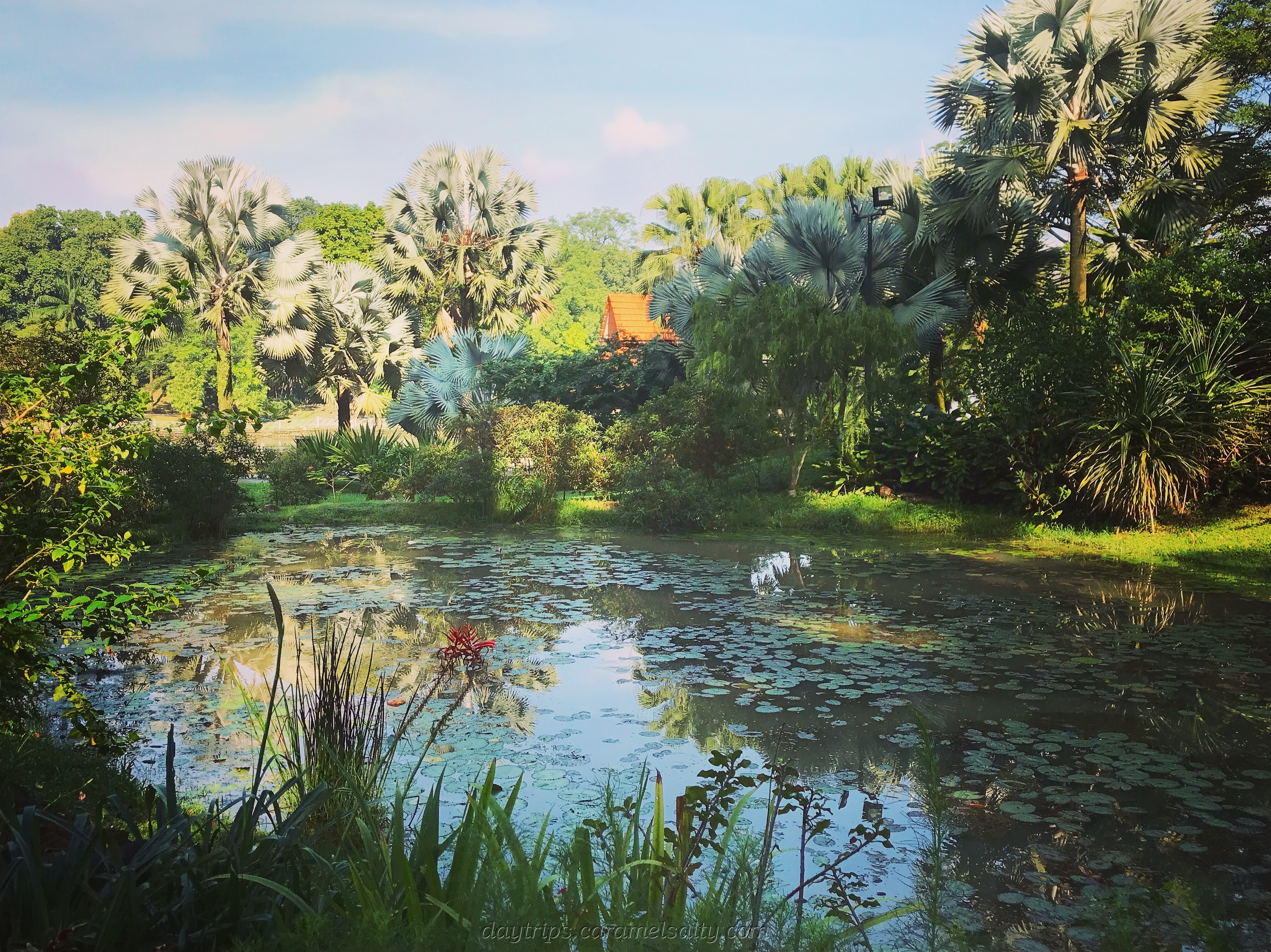
A set of stone steps takes me down towards the quacking ducks on the lake. I ignore no.12 – The (yellow and white, concrete) Canopy, as well as No.18 – The Performance Area. After all, I’m here for the nature. However, just by the canopy, I spot the very squiggly looking moringa tree, which is now claimed to be a miracle multi vitamin super food.
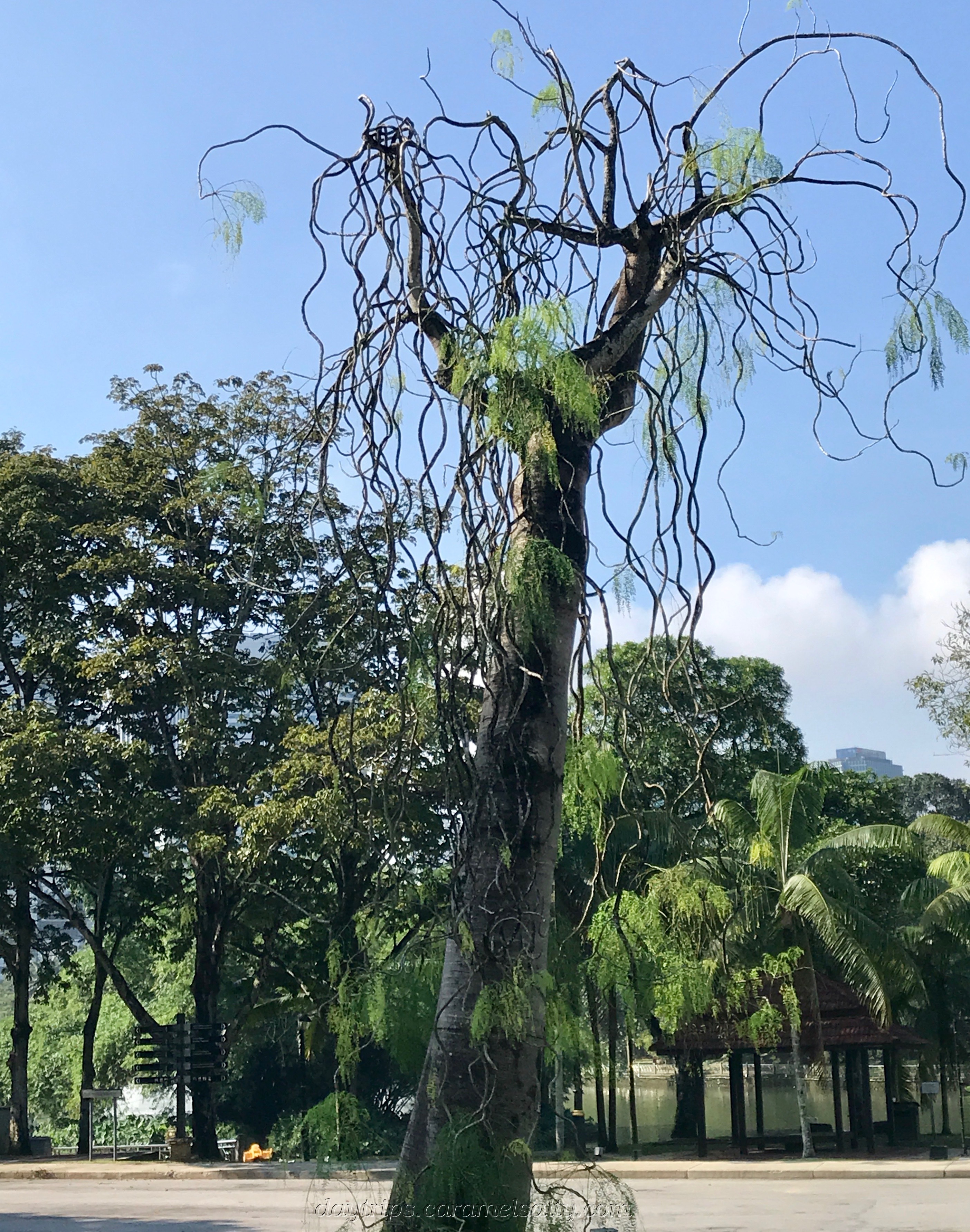
Further along is The Topiary at no.19. Just past the topiary, I cross a pretty white stone bridge to an islet on the lake, home to no.21 – The Cycads and Bamboos. Cycads have been on this planet since the Jurassic period. I’m not sure about bamboos, but I do know that their name derives from the South Indian Kannada language.

What grabs my attention on this islet is the amazing structure of no.20 – The Bamboo Playhouse. I get up close to admire the strong bamboo lashed together to create a solid carcass. I then exit the islet to the opposite side of the lake, where the secondary forest lining the other bank welcomes me with its cacophony of cicadas, insects and birds. Across the stream, I enjoy no. 25 – The Palm Collection. And back on my side, no.27 – The Ficus Collection.

I cross over the stream, to no.30 – The Herb and Spice Garden. Despite the poor labelling, I manage to spot a curry leaf plant and a mulberry tree complete with solitary berry. Across from it is the also rather disappointing no.29 – The Conservatory. It’s redeeming feature has to be the gigantic banyan tree at the entrance. It may be wide and tall and strong, but I note that even the imposing banyan cannot prevent other plants using it as a host tree.
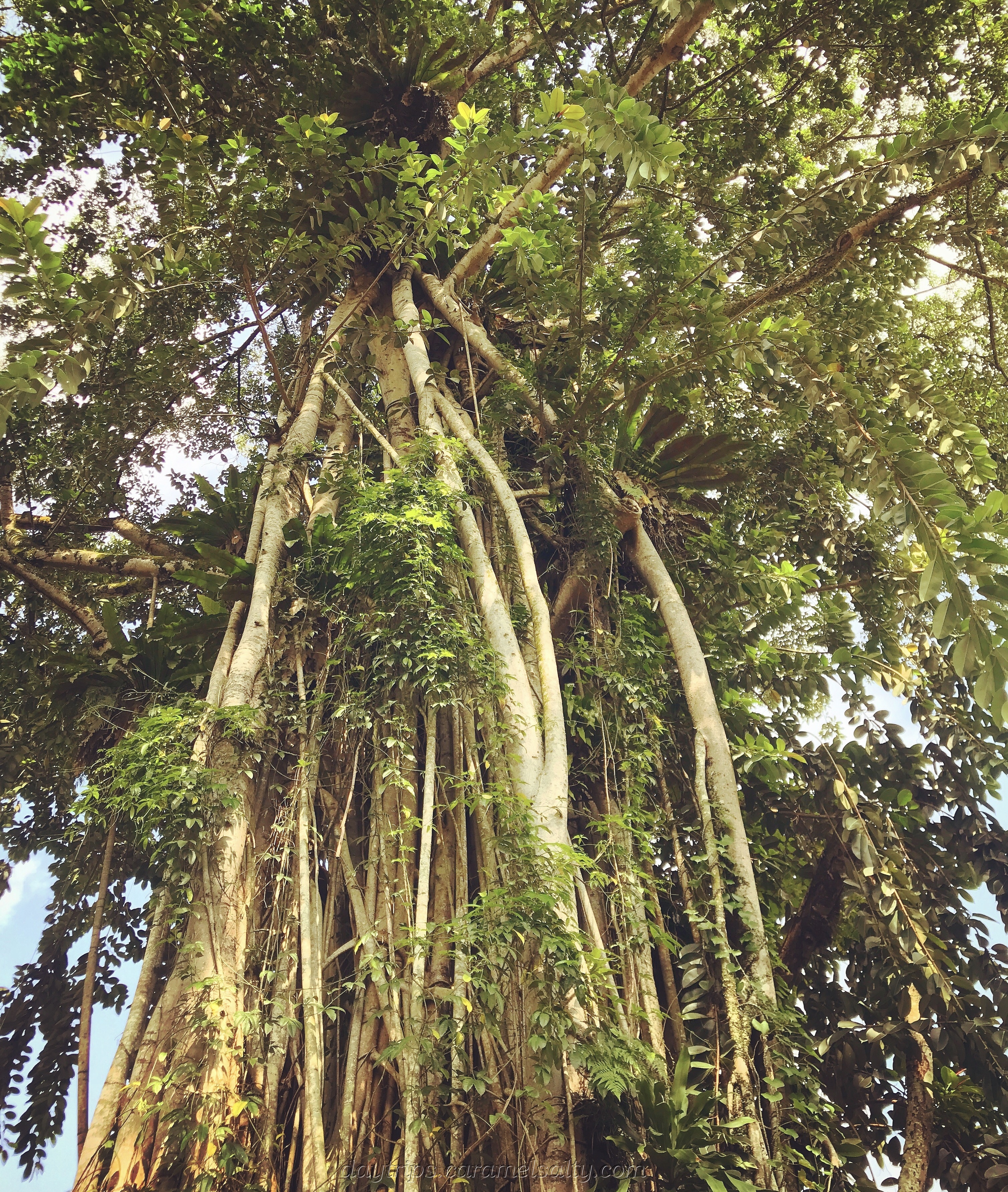
The Sunken Gardens at no.26 are manicured formal gardens with the Kuala Lumpur sky scrapers as backdrop. And it’s definitely sunken, as I admire its circular patterns from above. Although the map hints that no.24 – The Lawn is where newly weds would head to, I actually bump into a pair posing for photos at the beautiful, beautiful no.23 -The Oasis.
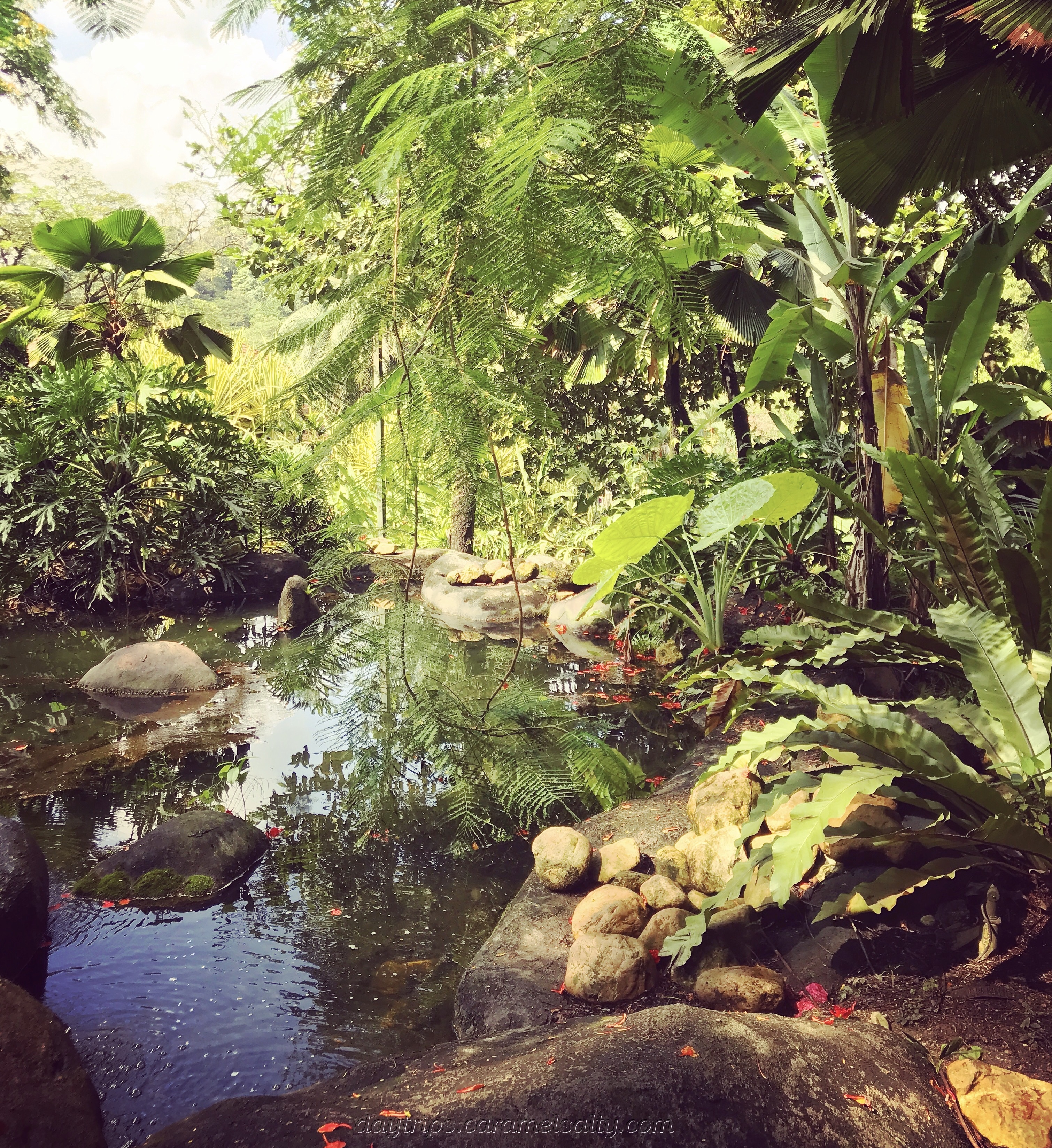
Stepping stones across the flowing water of the Oasis take me into the world of plants. In the very, very beginning, even before Venning and Swettenham, there was only algae. That was 550 million years ago. Flowering plants only appeared 250 million years ago. As for the homo sapiens, we turned up around 0.8 million years ago. And since the 19th century, 122 species of plants (listed here) have become extinct whilst we’ve been in charge.
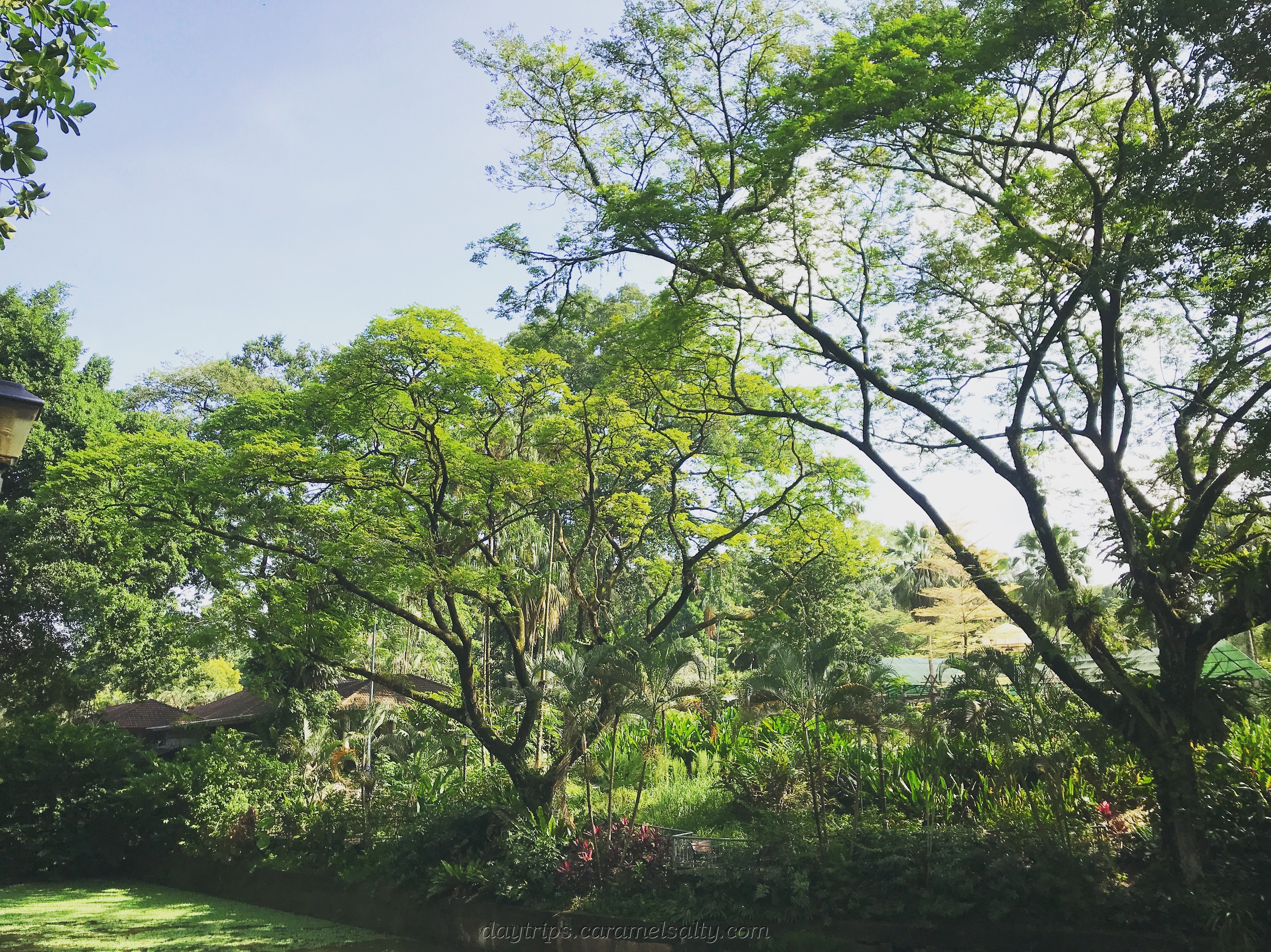
The world of plants is my favourite section. I wander in awe through no.9 – Zingiberales, no.10 – Heliconia Garden and no.11 – The Unique Trees Collection. It’s such a lush, green part of the gardens, with tall flowering heliconias, fruit trees, tall trees, leafy trees and even the odd sculpture or two. And plenty of information boards with interesting facts on them.
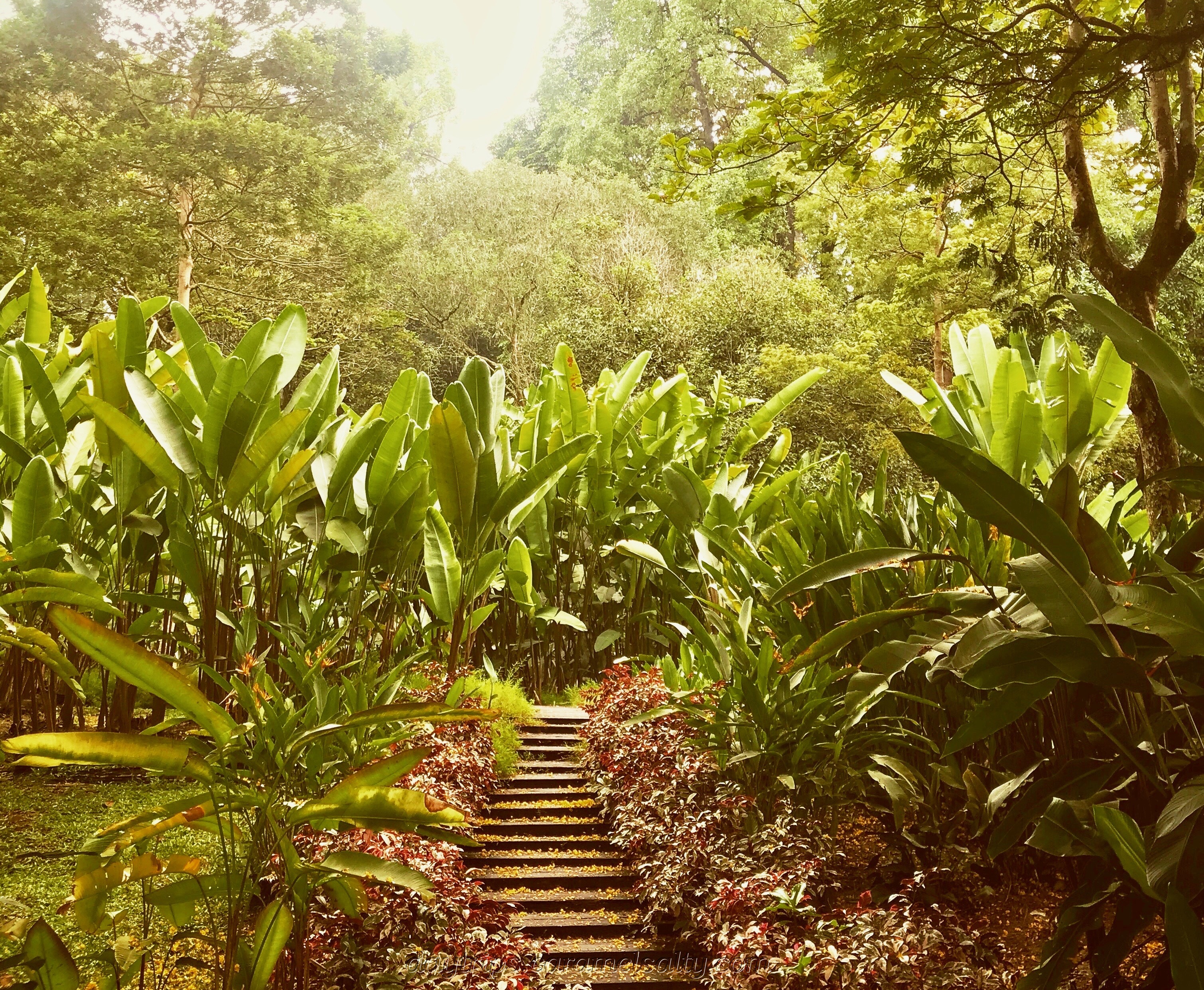
I’m back on the high road, heading towards no. 15 The Brazilian Nut Deck, a huge tree with a large wooden deck around it. With so many trees and plants around, it’s actually quite a pleasant, shady walk in the Lake Gardens. And company is always guaranteed, with early morning joggers and cyclists, mid morning tourist groups and, on the odd day, an all day film crew.

I’m almost back at no.16 – The Rare Fruit Tree section, when I see a set of steps leading up to the [3] Tun Abdul Razak Memorial, Malaysia’s second Prime Minister. It’s his old residence preserved with the furniture he used. It’s a lovely open plan house. The living quarters were entirely upstairs, whilst downstairs was reserved for visiting dignitaries.
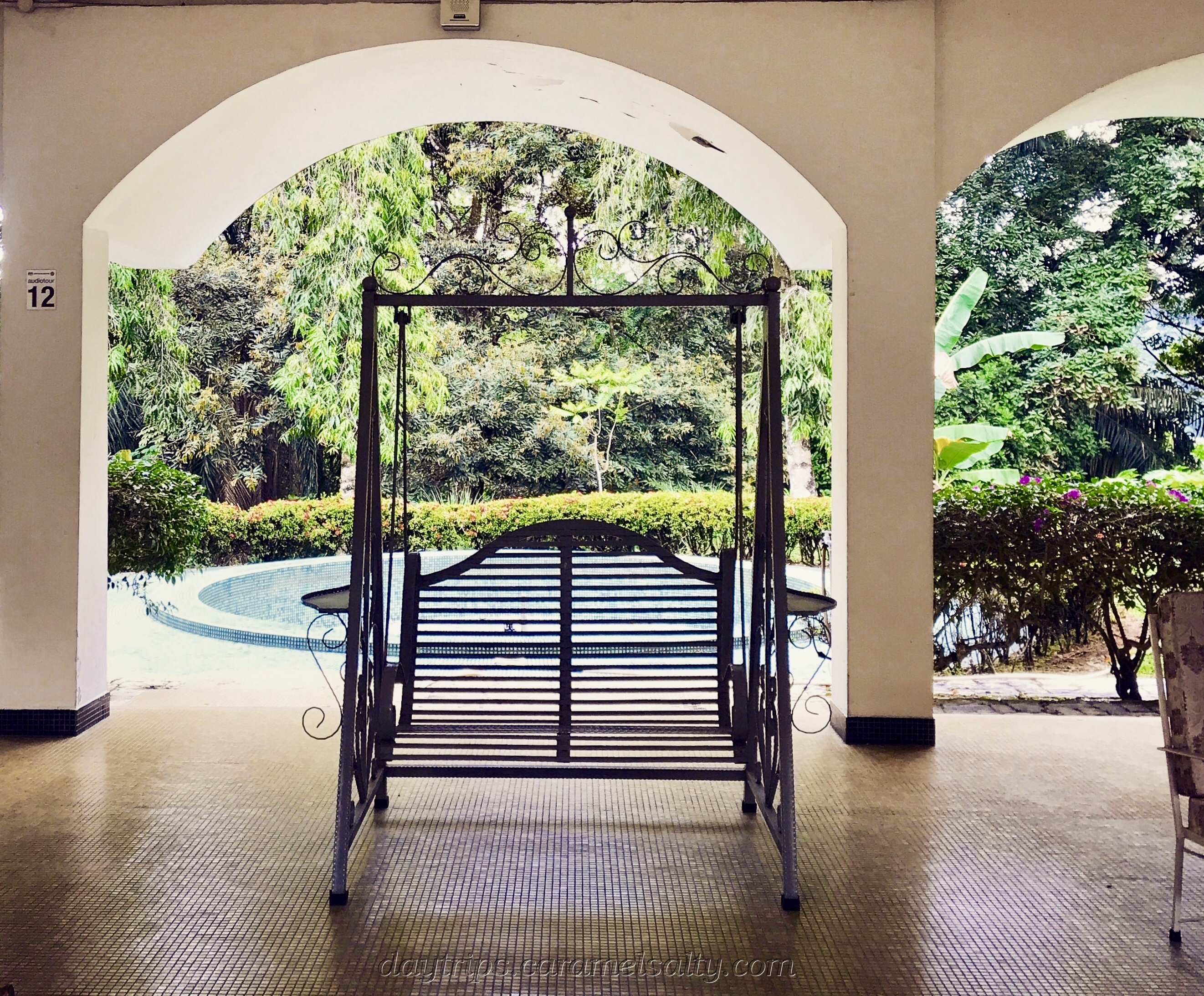
From the Memorial, the [4] deer park can be observed from the road leading off to the left. But as it’s well and securely fenced up, the deers can only be spotted from a distance, milling around the stream running in the valley below. However it’s still a charming walk, as I follow the meandering path amongst tall trees to no.7 – The Tembusu Deck, no.6 – The Fern Garden and no.5 – The Waterfall.

As I walk around the [5] Lake Gardens, I remember the river Bras Bras that once flowed through this beautiful valley. And I also remember Venning’s 10 year labour of love. It’s the reason why I’m able to wander amongst tropical plants with leaves larger than life, trunks as wide as a corridor, flowers of all shapes, sizes and colours. And it’s just a short hop away from the busiest transport hub in Kuala Lumpur.
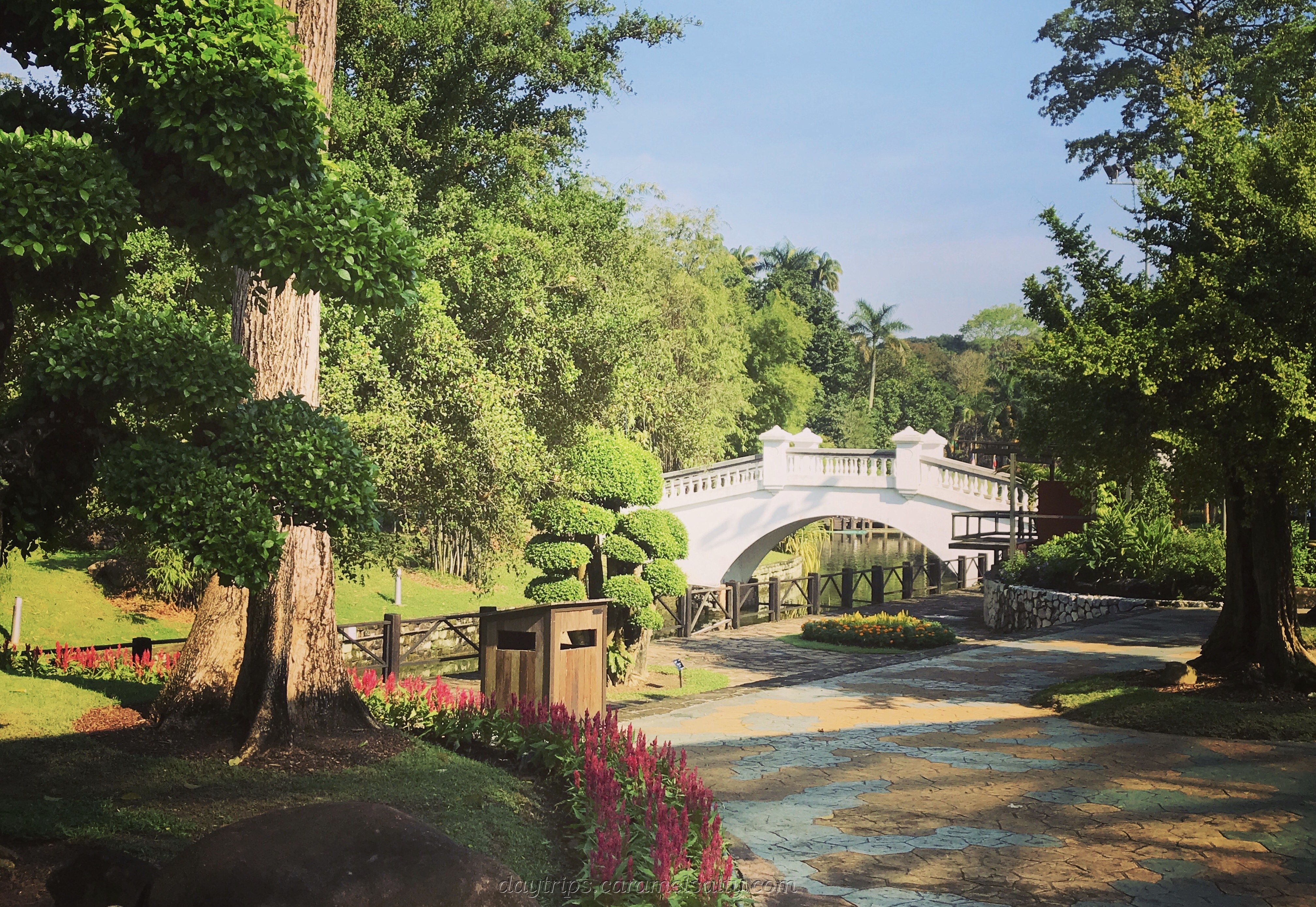
How to Appreciate the Lake Gardens
- From KL Sentral Station follow the signs for the MRT system for the National Museum. Sentral Station and the MRT are interconnected, albeit there’s a small charge for traversing the MRT station. Alternatively alight at Muzium Negara on the MRT.
- Kuala Lumpur Train Routes – map here.
- Touch and Go Cards are accepted on all trains (cashless) and buses in Kuala Lumpur. These can be purchased at LRT Customer Services Kiosks. Credit can be topped up at LRT Customer Services Kiosk and supermarket outlets (e.g. Seven-Eleven, Mynews.com) for a small charge.
- Tip: If you are a mosquito magnet, then demagnetise yourself.
- KL Sentral Hawker Stall – daily, from 08:00 till late. Stalls open at various times.
- Lake Gardens – daily, free
- Tun Abdul Razak Memorial (website) – closed Mondays, free
References – Journal of the Malayan Branch of the Royal Asiatic Society (Vol 28 Pt 4) – pdf here
